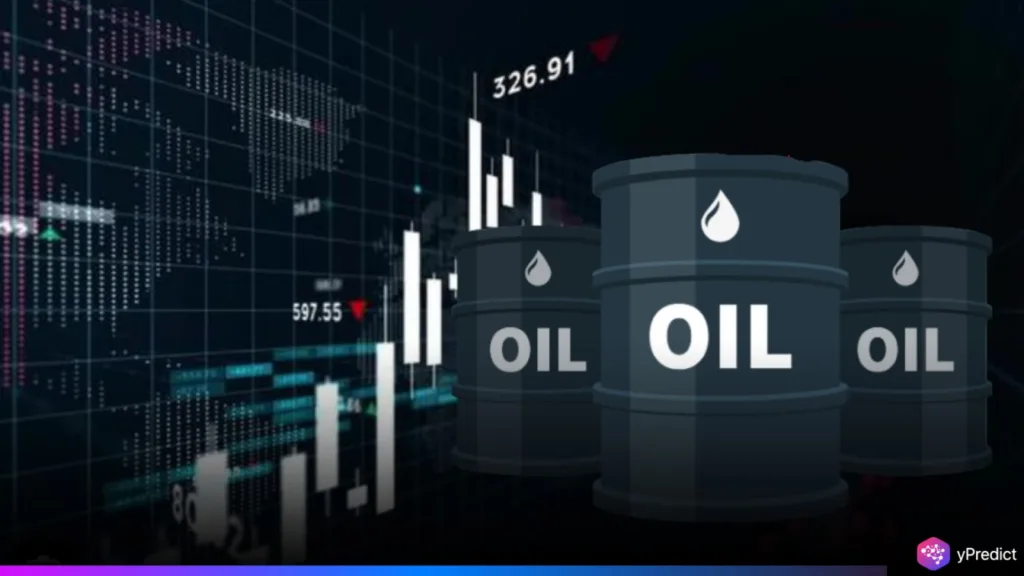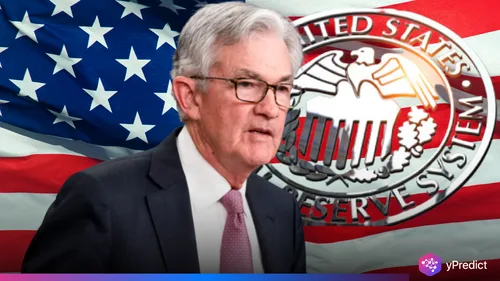
Oil prices drop globally on Thursday following a surprise increase in U.S. crude inventories and growing expectations of a major OPEC+ production hike in July. Data from the U.S. Energy Information Administration revealed a larger-than-expected stockpile build, defying forecasts of a seasonal decline. Meanwhile, signals that OPEC+ may boost output have intensified concerns about a potential supply glut. These developments have deepened market uncertainty, weighing on both Brent and West Texas Intermediate prices amid fragile sentiment and fears of oversupply.
At the same time, indications surfaced that OPEC+ may dramatically raise supply in July, putting negative pressure on an already shaky market attitude. Together, these trends have fuelled fears of oversupply and contributed to the recent drop in Brent and West Texas Intermediate prices.
Inventory Spike and OPEC+ Strategy Fuel Downward Pressure
According to Bloomberg, Global oil prices dipped more than 1% on Thursday as market sentiment turned bearish in response to unexpected increases in U.S. crude and fuel inventories, coupled with speculation that OPEC+ may authorize a significant production boost in July.
According to statistics issued by the United States Energy Information Administration (EIA), domestic oil stockpiles increased by 1.3 million barrels in the week ending May 16, contradicting analyst predictions of a fall. Petrol and distillate stockpiles also rose, indicating a slowing in demand just before the traditionally busy summer driving season. The increase was fuelled in part by a six-week high in crude imports.
These developments added to the downward pressure already mounting in oil markets. Brent crude futures dropped by $1.05, or 1.6%, to $63.86 per barrel by mid-morning in Saudi Arabia. U.S. West Texas Intermediate (WTI) crude also slipped by 98 cents, or 1.6%, to trade at $60.59.
Investor apprehension increased as rumours surfaced that the Organisation of Petroleum Exporting Countries and its allies (OPEC+) are planning a significant increase in production at their June 1 meeting. Additionally, the alliance is considering increasing output by around 411,000 barrels per day in July, which is three times the amount of prior monthly changes. While no official agreement has been reached, the prospective move would be the third consecutive monthly increase as the group works to reverse past supply cuts.
OPEC+ May Shift Toward Market Share
OPEC+ appears to be moving its priority from price stability to market share as global competition heats up. Analysts, including Helima Croft of RBC, predict a 411,000 bpd increase in output driven by Saudi Arabia, while it is uncertain whether voluntary curbs would expire as planned. Harry Tchiliguirian at Onyx Capital Group said in a statement that,
We’re seeing the market reacting to evidence that OPEC is letting go of a strategy to defend price in favour of market share. It’s a bit like taking off a Band-Aid; you do it in one fell swoop.
OPEC+ members are reconsidering their price-first strategy in favour of protecting market share, particularly as non-OPEC producers like the United States and Brazil increase output. The alliance will meet on May 28 and June 1 to make final decisions on output levels.
Meanwhile, a surprise build in U.S. crude inventories raises concerns about weak demand. Emril Jamil, senior analyst at LSEG Oil Research, noted that the unexpected inventory rise could particularly depress WTI prices, potentially encouraging more U.S. crude exports to Europe and Asia.
The projected output increase shows internal tensions within OPEC+, with Saudi Arabia urging underperforming members such as Iraq and Kazakhstan to meet quotas. These nations have struggled to control excess production, particularly from foreign operators. Market attitude is split: some perceive the move as a power play to reclaim supply control, while others see it as a strategic response to global demand trends.
Conclusion
OPEC+ plans to finalise July output objectives during virtual meetings in late May and early June. Morgan Stanley’s Martijn Rats predicts another 411,000 bpd increase, citing consistent quota violation and reasonable market absorption. However, Goldman Sachs expects a stop after July, as the IEA predicts slower demand growth in the second half of 2025 due to economic problems. Overall, oil prices remain under pressure due to oversupply concerns, shifting production strategies, and global economic uncertainty.







